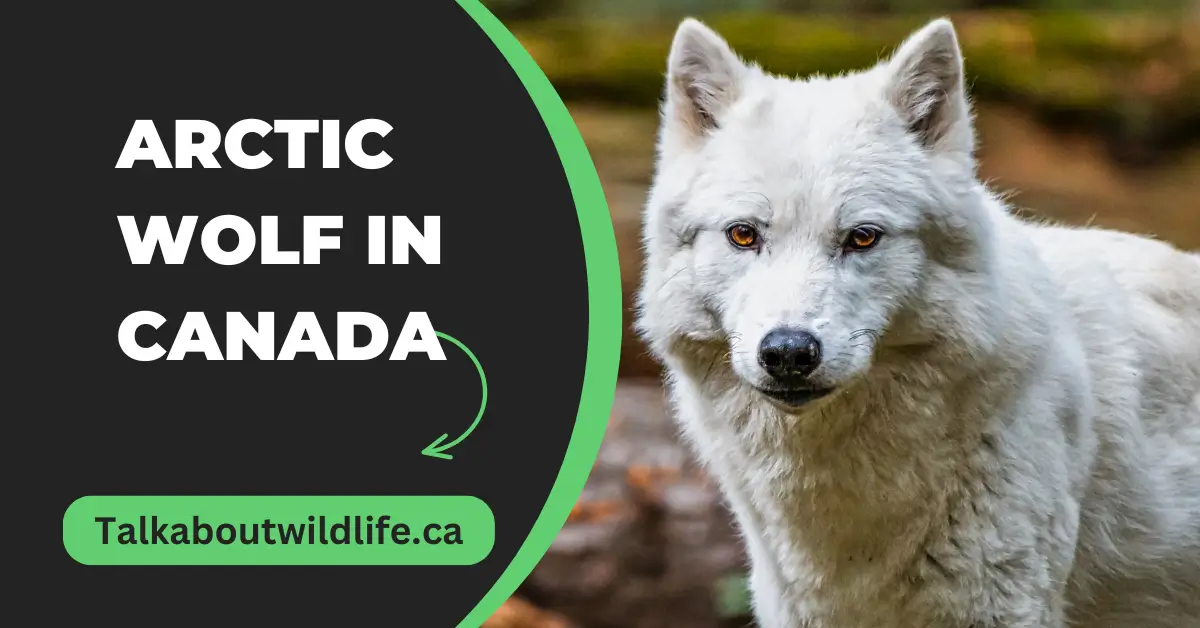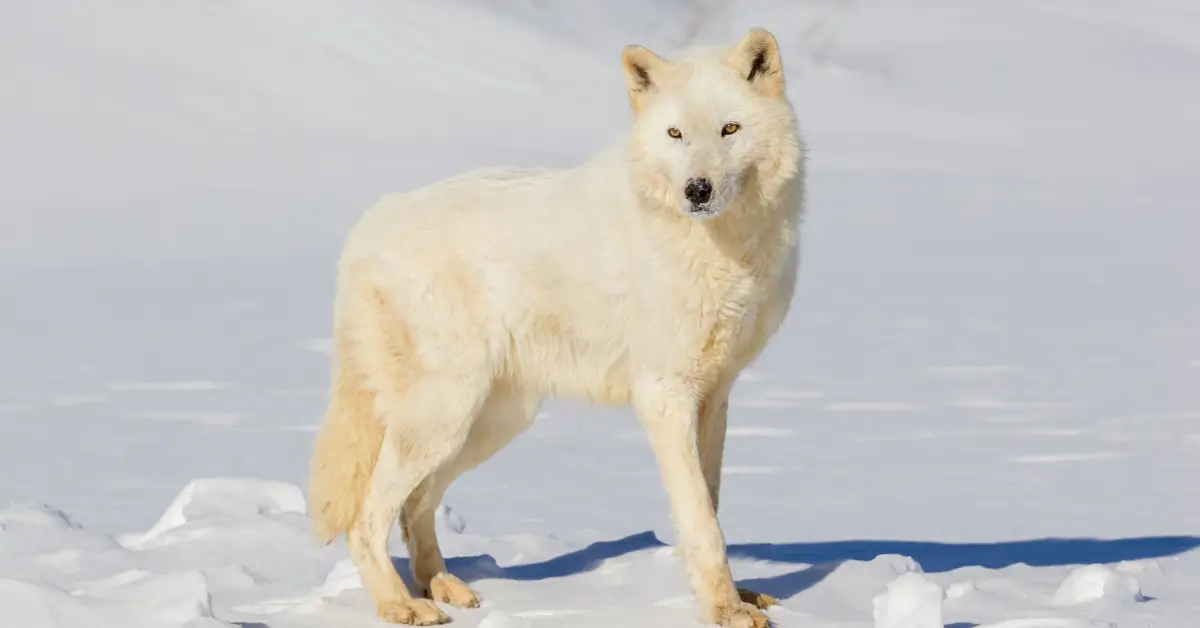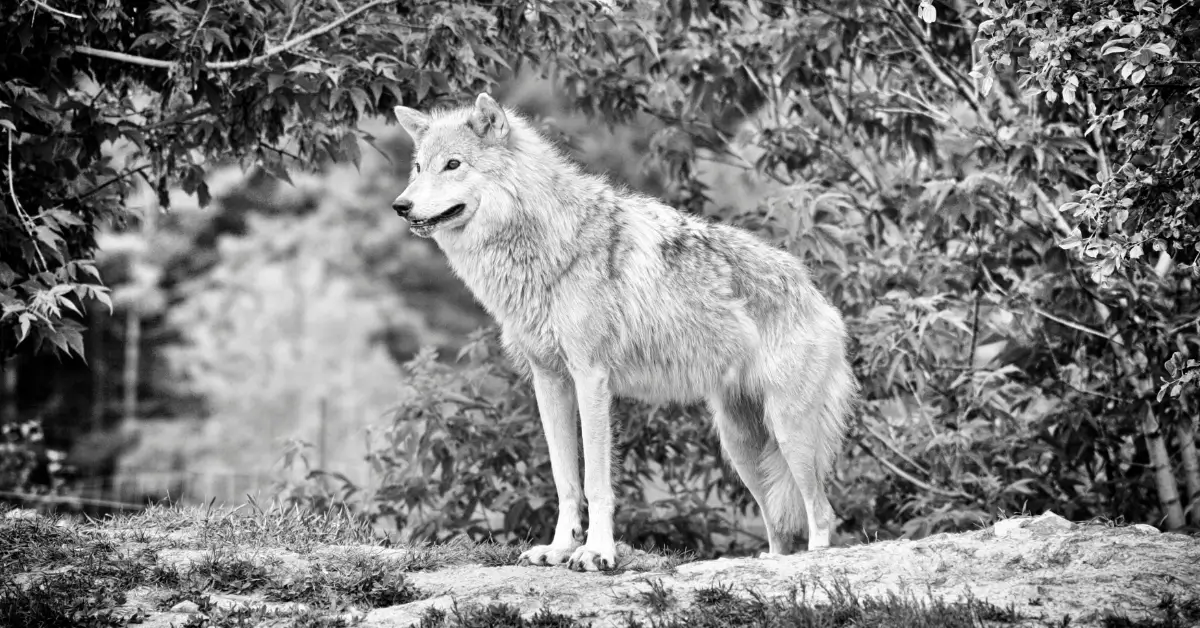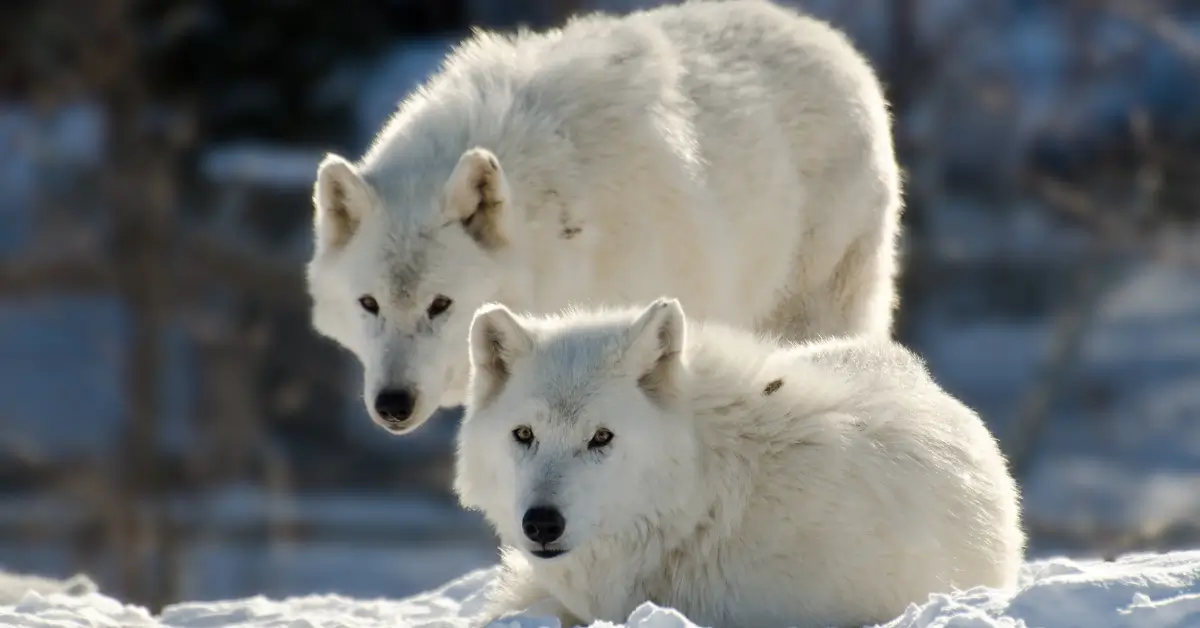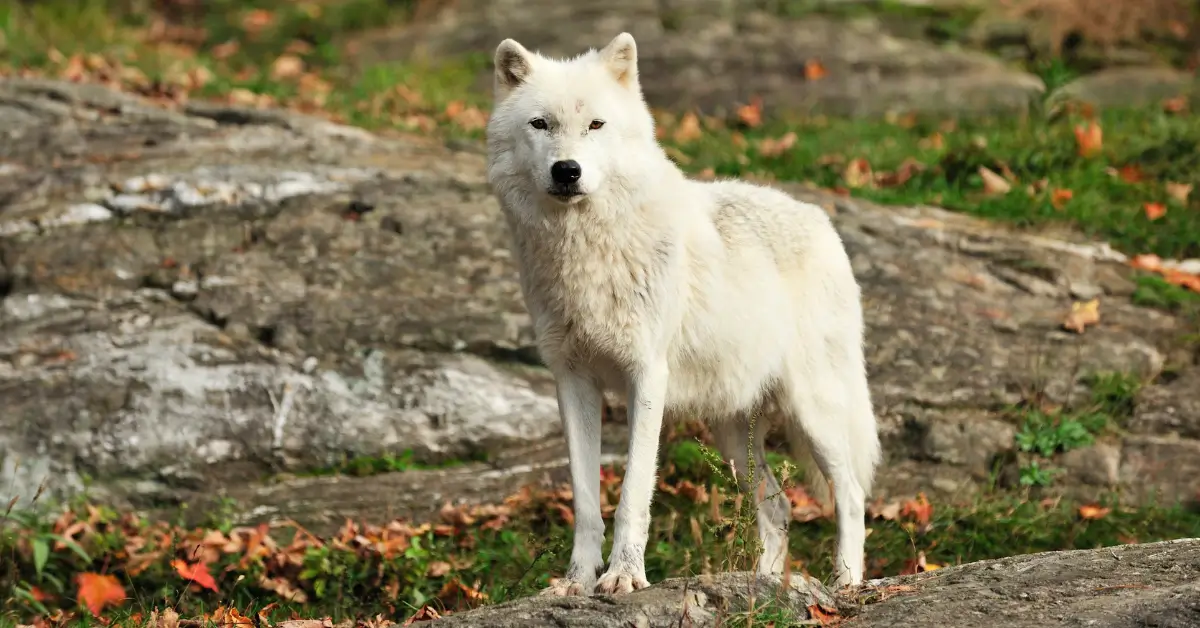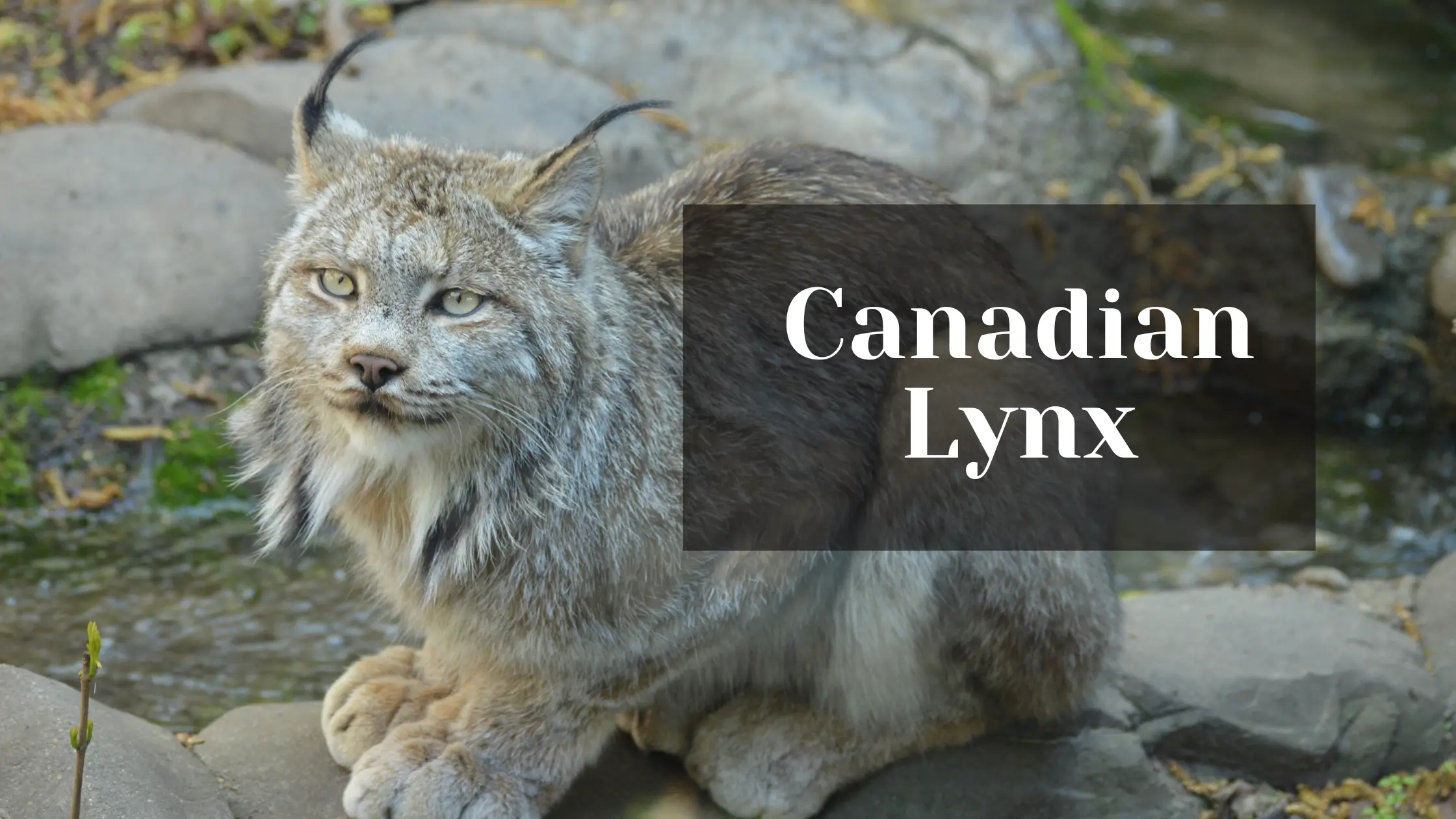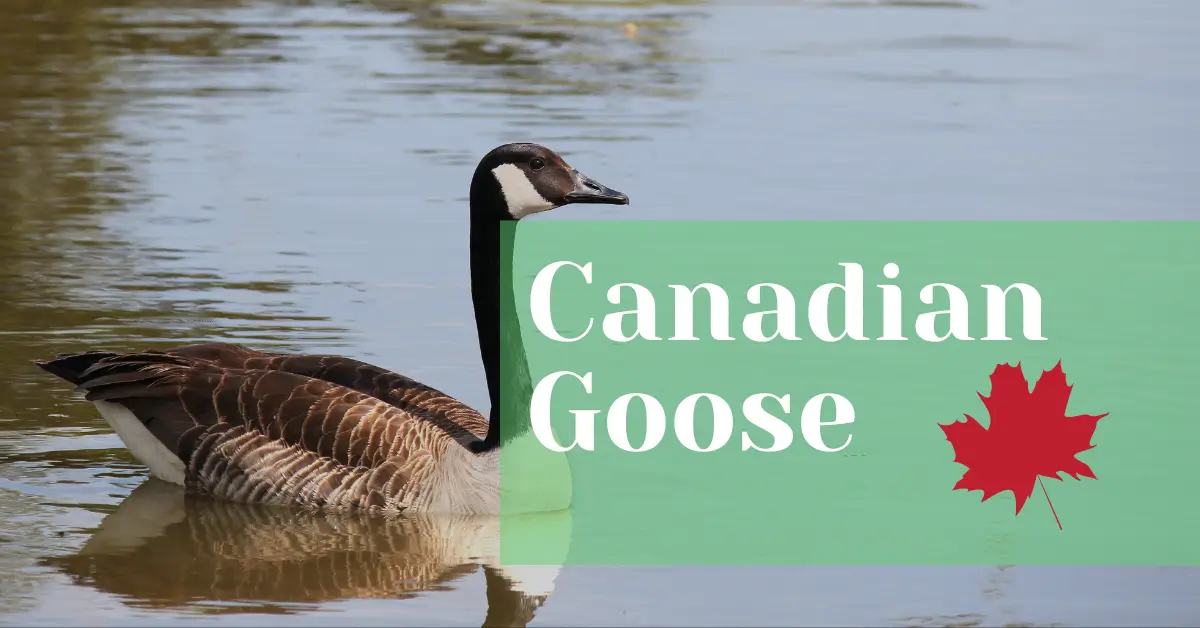The Arctic wolf is a subspecies of the gray wolf that lives in the Arctic regions and is well-adapted to the harsh, cold environment. These animals have thick, white fur that helps camouflage them in the snowy Arctic and insulates them from the extreme cold temperatures.
The Arctic wolf is an iconic symbol of the harsh yet fragile northern environment, and its conservation is important for preserving the delicate balance of the Arctic tundra.
Physical Features of Arctic Fox
Following are some physical characteristics of this animal that would make it worthy to see;
| Features | Relevant Information |
| Scientific Name | Canis lupus arctos |
| Life Span | Ranges from 7 – 17 years |
| Diet | Caribou, Muskox, Arctic Hares, Ptarmigan and Lemmings |
| Height | This ranges from 60 – 80 cm |
| Average Weight | It is about 32 – 70 kg
For males, it is about 20 – 80 kg while for females it is 15 – 55 kg |
| Other Names | Polar wolf or White wolf |
| Habitat | Dens in soil dugs, Arctic tundra |
| Status of specie | Not Endangered |
Interesting Facts About Arctic Wolf in Canada
This attractive animal possesses many catchy features that can capture the attention of tourists coming to see it;
-
Resilient Survivors
They inhabit the most harsh environment of the earth i.e, Canada’s Arctic Archipelago because of their adaptations to cold.
-
Pack Mentality
These wolves live in closely bonded family packs, with a strict social hierarchy led by an alpha male and female.
-
Arctic Camouflage
Their thick, white fur provides excellent camouflage against the snowy Arctic landscape.
-
Paw-feet Adaptation
Their large paws act like natural snowshoes, enabling them to travel efficiently over deep snow and ice.
-
Howling Harmony
Arctic wolves communicate through a variety of howls, barks, and whines, strengthening pack bonds and warning off intruders.
-
Polar Hunt
Arctic wolves are known to follow and hunt polar bears, scavenging their leftovers or even killing bear cubs.
-
Winter Warmth
During the coldest months, Arctic wolves seek shelter in dens or beneath dense vegetation to conserve body heat.
-
Breeding Bonds
Mating pairs form strong bonds and often remain together for life, ensuring the survival of their offspring.
Sightseeing of Arctic Wolf in Canada
These fascinating animals can be seen mostly in icy places which are located in the canadian territory.
| Direction of the Country | Places Where Arctic Wolf are Found |
| Eastern Territory | Quebec |
| Central Territory | Ontario and Manitoba |
| Northern Territory | Yukon, Northwestern territory, Nunavut |
National Islands and Parks to Take a Shot of Arctic Wolf
Following islands are inhabited by this animal which presents a beautiful picture of the arctic wildlife of the Canadian territory;
- Ellesmere Island
- Devon Island
- Axel Heiberg Island
- Baffin Island
- Melville Island
- Victoria Island
- Ivvavik National Park
- Wapusk National Park
Best Time and Season for Seeing the Arctic Wolf
These winter inhabiting animals are mostly captured during the intense winter seasons in canada because they search for food and roam around in their territory.

